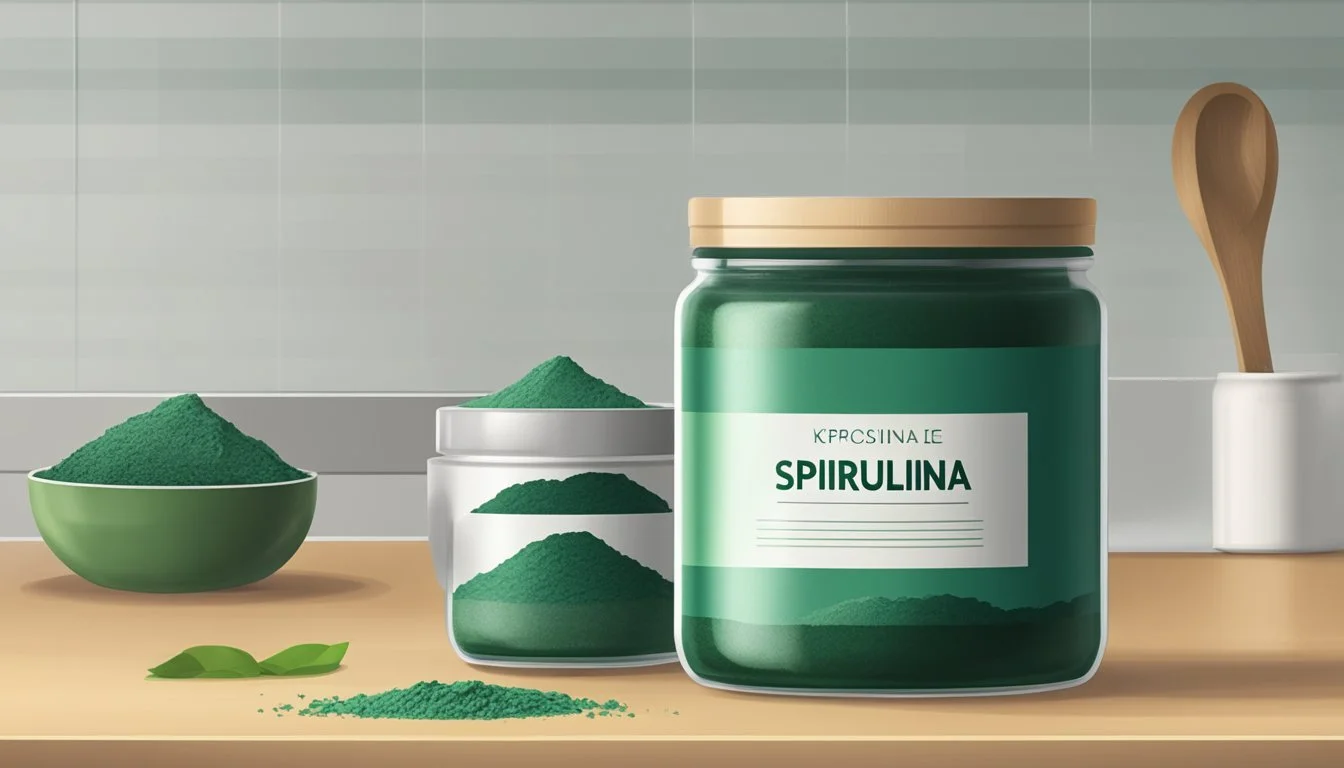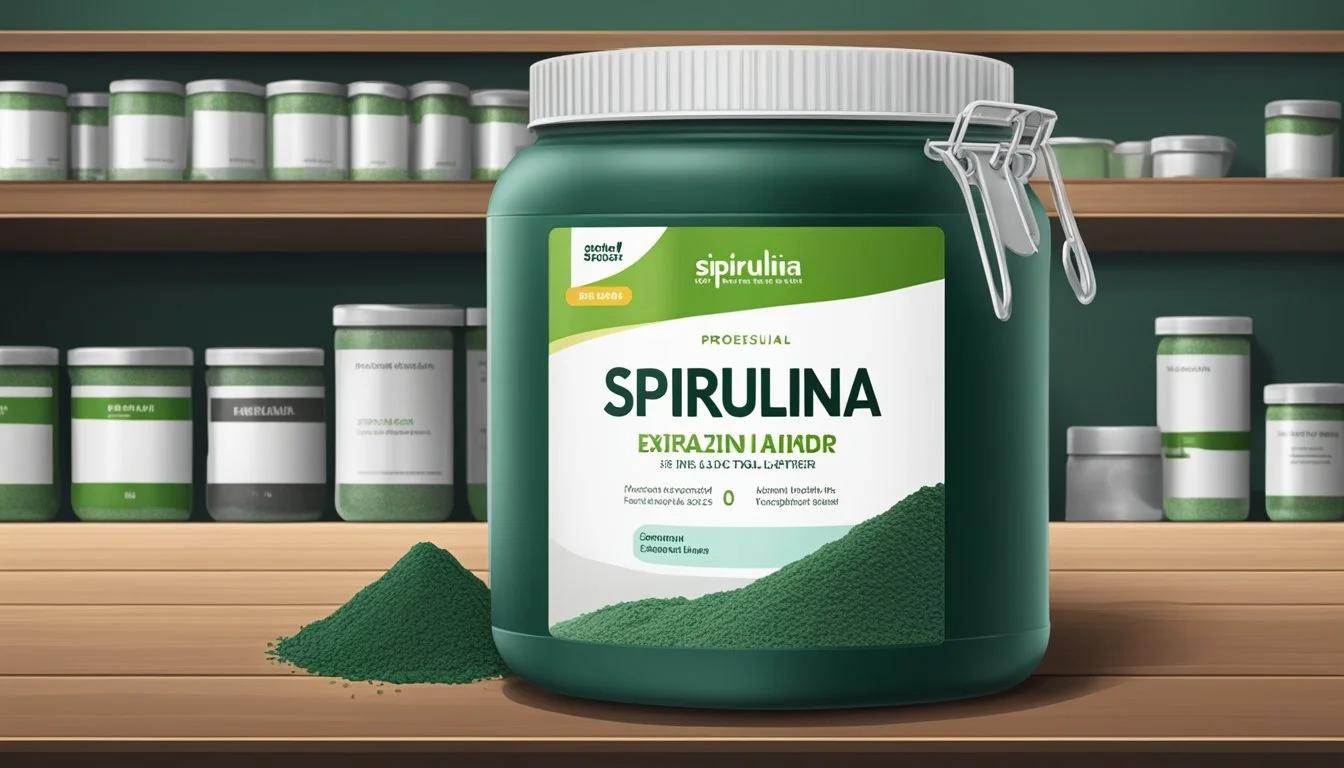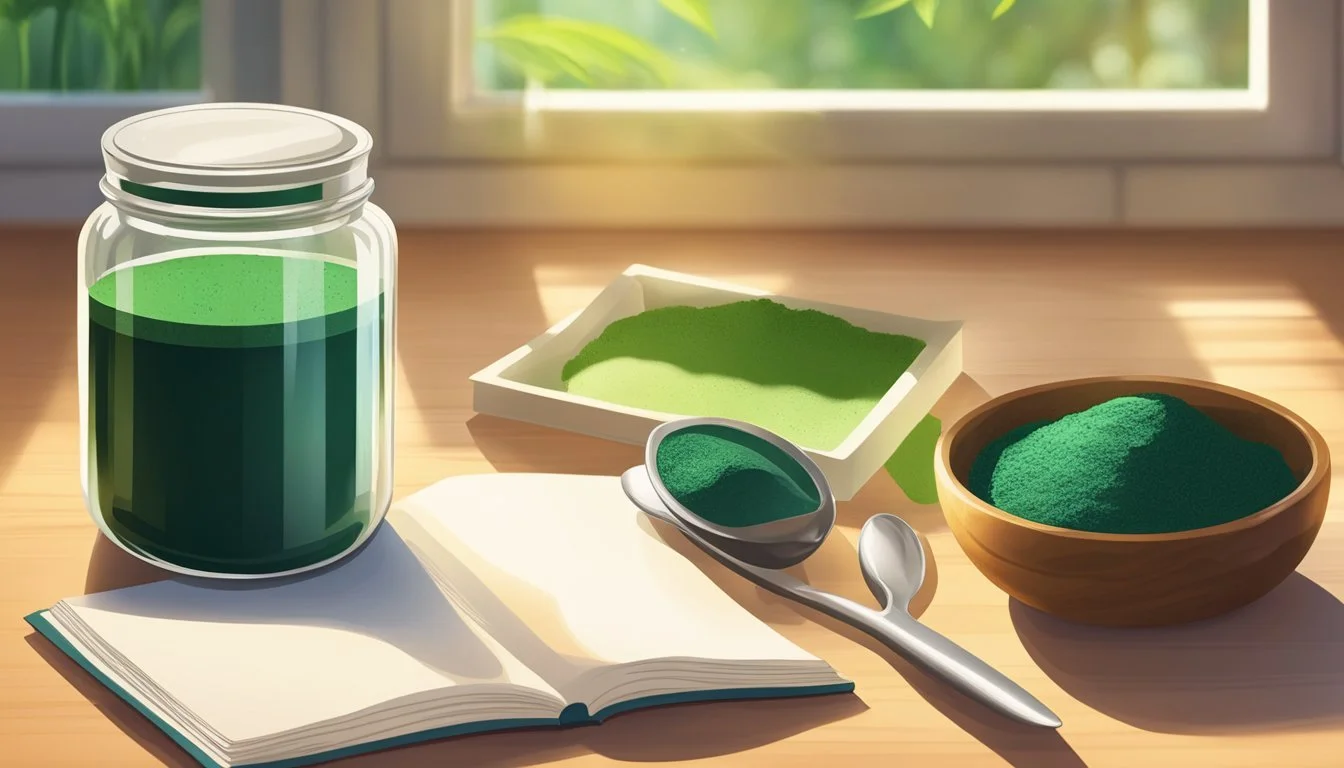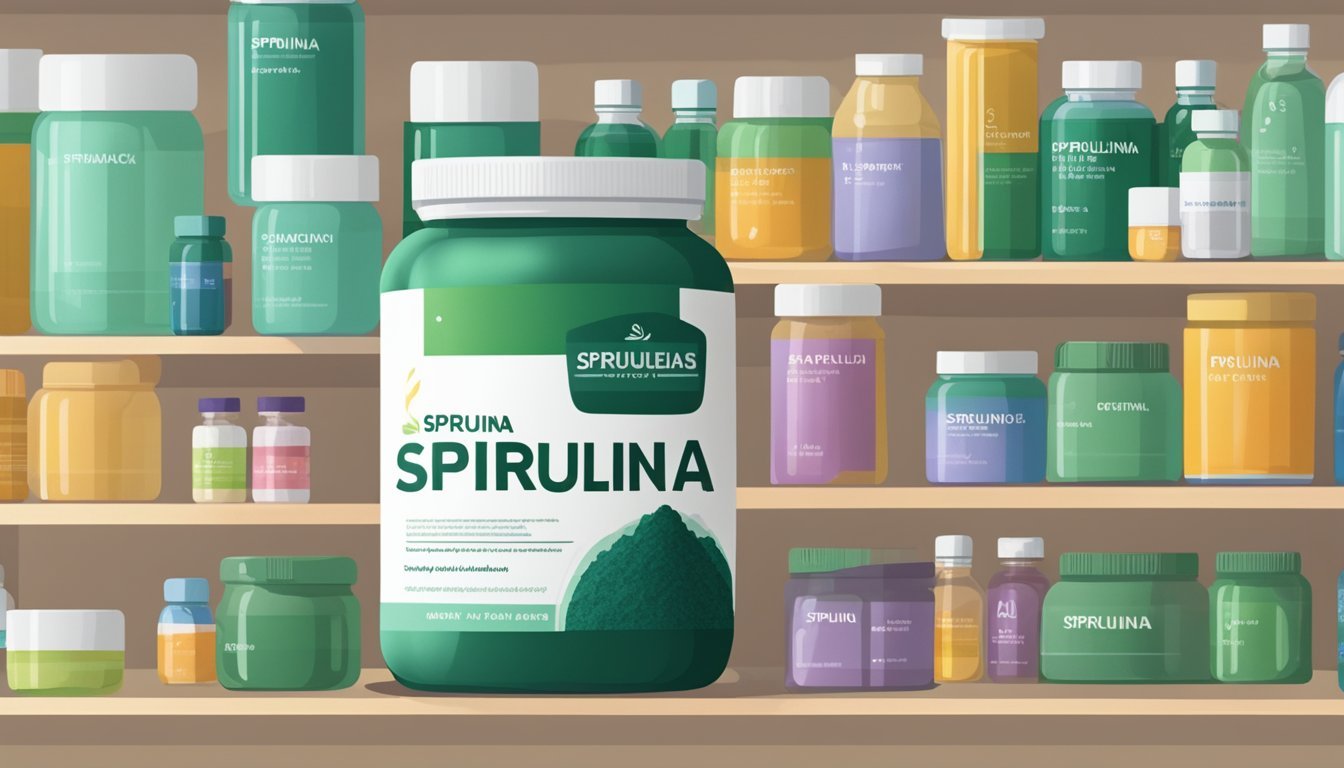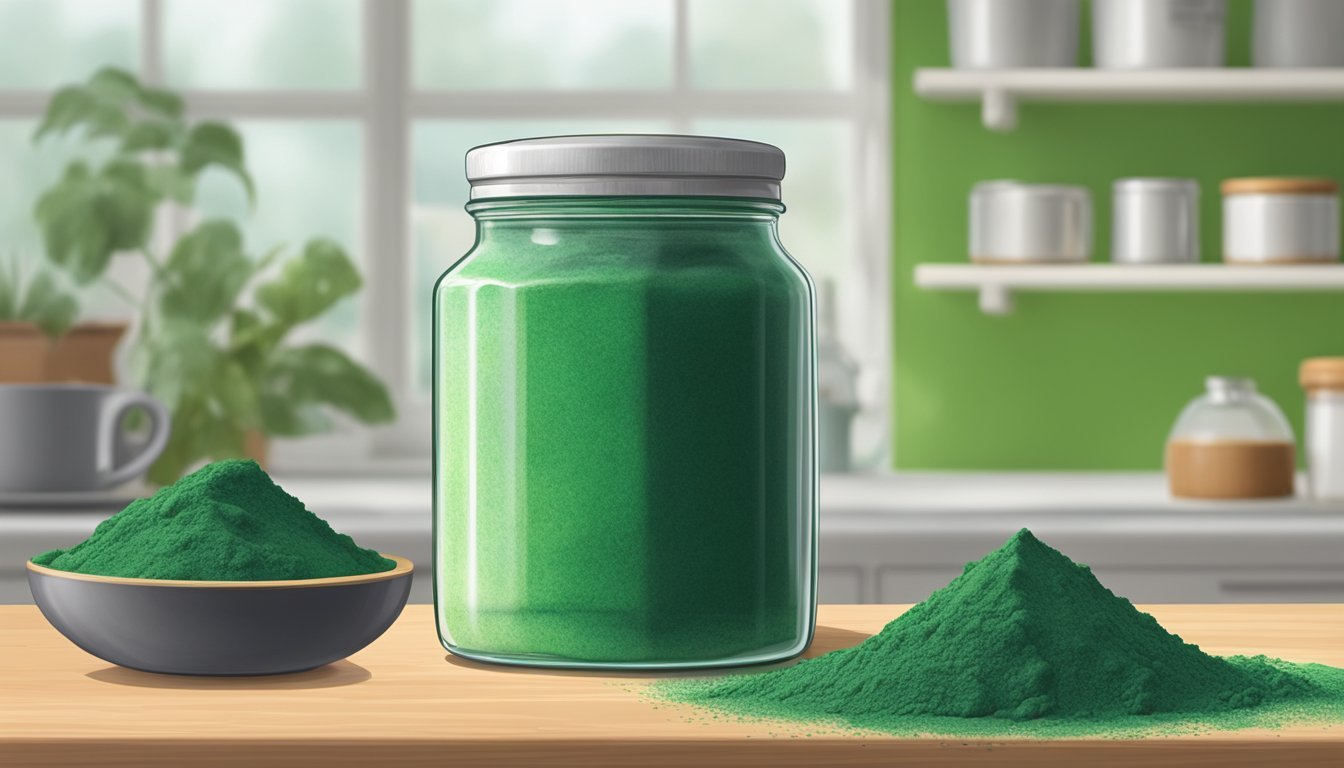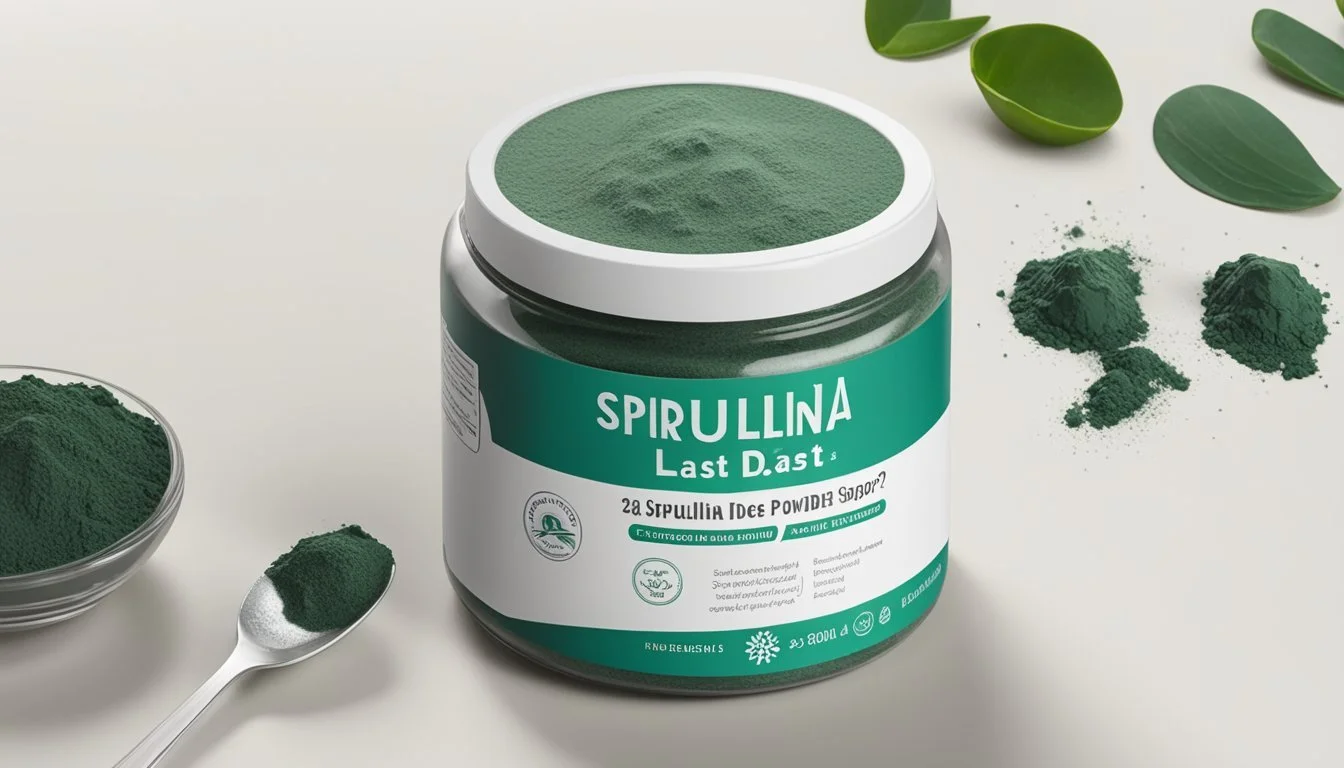How Long Does Spirulina Powder Last?
Understanding Shelf Life and Storage
Spirulina, a type of blue-green algae, has gained prominence as a superfood due to its nutrient-dense profile. It is packed with proteins, vitamins, and minerals, making it a popular supplement among vegans and health-conscious individuals. The powdered form of spirulina is often favored for its convenience and long shelf life, which allows it to be easily incorporated into a variety of diets.
When it comes to the shelf life of spirulina powder, it can generally last up to two years when the package is unopened and stored properly. The longevity of spirulina is contingent upon maintaining it in a dry, cool environment, away from direct sunlight and significant temperature changes. Once the package is opened, the powder should ideally be consumed within three to six months to ensure its freshness and nutritional value are retained.
It is crucial that spirulina powder is kept in an airtight container to protect it from moisture and to prevent contamination. Storing spirulina in a refrigerator can extend its freshness; however, this is typically not necessary if the storage conditions are optimal. Users should always check for any signs of spoilage, such as changes in color, smell, or the presence of clumps, which can indicate moisture exposure that could lead to mold growth and a decline in the quality of the algae.
Spirulina Powder Basics
Spirulina powder is more than just a health supplement; it is a concentrated source of various nutrients, offering a significant boost for a healthy diet.
Definition and Characteristics
Spirulina powder is derived from a blue-green algae that thrives in both fresh and saltwater. It is characterized by its vibrant green color, which is a result of the chlorophyll content. The powder form of spirulina is typically obtained by harvesting the algae, drying it, and then grinding it into a fine powder.
Nutritional Profile
The nutritional profile of spirulina powder is impressive, boasting a diverse range of components:
Proteins: Spirulina is composed of about 60% protein, which is complete since it contains all essential amino acids.
Vitamins: It is a source of various vitamins including B1 (thiamine), B2 (riboflavin), B3 (niacin), B6 (pyridoxine), and E.
Minerals: Spirulina provides essential minerals like iron, magnesium, sodium, potassium, and calcium.
Antioxidants: It is abundant in antioxidants, which help protect against oxidative stress.
Fatty Acids: Spirulina contains fatty acids, including gamma-linolenic acid (GLA), alpha-linolenic acid (ALA), linoleic acid (LA), eicosapentaenoic acid (EPA), stearidonic acid (SDA), docosahexaenoic acid (DHA), and arachidonic acid (AA).
By including spirulina in a diet, one can access its rich array of nutrients that support overall health and wellness.
Health Benefits
Spirulina powder is cherished for its impressive spectrum of health benefits, largely due to its dense nutritional profile and potential impact on various diseases.
Essential Nutrients for Wellbeing
Spirulina is a powerhouse of vital nutrients essential to maintain overall wellbeing. It is particularly popular in vegan diets as a source of protein; a single tablespoon of spirulina powder can deliver approximately 4 grams of protein. It not only satisfies a significant portion of the daily recommended intake of protein for vegans but also provides a comprehensive amino acid profile. Spirulina is rich in vitamins and minerals, notably B vitamins, iron, and potassium, contributing to energy metabolism, immune function, and muscular health.
Nutrient Benefit Protein Supports muscle health and enzymatic activities Thiamin Essential for energy metabolism Iron Crucial for oxygen transport and cognitive performance Potassium Helps maintain normal cellular function and blood pressure
Impact on Diseases
Spirulina's role in disease management and prevention is an area of growing interest. Its antioxidative properties are linked to a reduced risk of chronic diseases, including heart disease and type 2 diabetes. The powder contains antioxidants that may help protect the body against oxidative stress, which can lead to cellular damage.
Research suggests potential benefits for patients with asthma and inflammatory conditions such as rheumatoid arthritis and ankylosing spondylitis. There are ongoing studies exploring the impact of spirulina on cancer; however, while spirulina exhibits certain properties that are believed to be beneficial, more research is necessary to conclusively determine its effectiveness in cancer prevention or treatment.
Spirulina is neither a cure nor a guaranteed preventive measure for these diseases but can be considered as a beneficial addition to a balanced diet.
Shelf Life Determinants
The shelf life of spirulina powder is influenced by specific conditions related to storage and the environment. Understanding these determinants is critical for maintaining the potency and nutritional value of the product.
Impact of Storage Conditions
Temperature and Humidity: Ideally, spirulina powder should be stored in a cool, dry place. The optimal storage temperature is generally below 77 degrees Fahrenheit (25 degrees Celsius), and with low humidity to prevent the growth of mold or bacteria, as well as to reduce any potential degradative chemical reactions within the product.
Container and Oxygen Exposure: An unopened bag or container of spirulina powder can maintain its quality for up to two years. After opening, it should be transferred to an airtight container to minimize oxygen exposure. Oxygen can lead to the oxidation of nutrients and increase the risk of contamination, which accelerates spoilage. It is recommended to consume opened spirulina powder within six months for maximum freshness.
Effects of Environmental Factors
Light Exposure: Spirulina powder is sensitive to light, particularly direct sunlight, which can cause degradation of certain nutrients. Prolonged exposure to light can also lead to the generation of free radicals, which can further deteriorate the quality of the powder. Therefore, it is advised to store spirulina in containers that offer protection against light, preferably opaque rather than transparent.
Air Quality: In areas with poor air quality or high levels of environmental pollutants, there is a greater risk of spirulina powder absorbing contaminants. Keeping it in a sealed container reduces the risk of such contamination and helps preserve its shelf life and efficacy.
Proper Storage Techniques
To maintain the potency and extend the shelf life of spirulina powder, it is crucial to understand and adhere to the right storage techniques. Careful storage not only retains spirulina's nutritional value but also prevents spoilage.
Best Practices for Extending Shelf Life
Storage Location: Spirulina powder should be stored in a cool and dry place, away from heat sources and moisture. This environment helps to preserve the powder's quality over time.
Containers: Using an airtight container is vital to prevent exposure to air and moisture which could degrade the spirulina powder. Containers made of glass with airtight lids or food-grade plastic are recommended.
Refrigeration: Although not always necessary, storing spirulina in the refrigerator can help extend its shelf life, particularly after opening.
Avoiding Sunlight: To prevent the degradation of key nutrients in spirulina powder, keep it out of direct sunlight. Opt for containers that are opaque as opposed to clear ones to block out light.
Table indicating Spirulina Powder Storage Instructions:
State of Package Storage Location Container Type Unopened Cool, dry place Original packing Opened Fridge (optional) Airtight container
Common Storage Mistakes
There are a few mistakes to steer clear of when storing spirulina powder:
Moisture Exposure: Spirulina powder is highly sensitive to moisture, which can lead to clumping and the growth of bacteria or mold.
Improper Sealing: If the container is not sealed properly, the powder may absorb odors from other foods, which can affect its taste and quality.
Heat Exposure: Storing spirulina near heat sources can result in the degradation of its nutrient value.
Freezing: It is generally not advisable to freeze spirulina powder, as the freeze-thaw cycle might affect its texture and potency.
Following these precise storage techniques helps to ensure that spirulina retains its nutritional profile and remains safe for consumption.
Shelf Life Expectations
The endurance of spirulina powder as a dietary supplement is of considerable interest due to the nutritional benefits it offers. The product's longevity is contingent upon its storage condition and whether the package has been opened.
Unopened Spirulina Powder
Unopened spirulina powder, when stored properly, can maintain its quality for an extended period. The typical shelf life for a sealed package is:
Up to 2 years, provided it's kept in a cool, dry place
Ensuring the temperature falls between 15 to 25 degrees Celsius (59 to 77 degrees Fahrenheit)
After Opening
Once a spirulina powder package is opened, the clock starts ticking on its freshness:
Maximum of 6 months if kept in ideal conditions
Store in an airtight container, in a dry location at room temperature
Avoid exposure to sunlight and humidity, as these can degrade the product faster
Using Spirulina Powder
Spirulina powder is a versatile supplement that can be seamlessly added to a variety of foods and products. Its high nutritional profile makes it a popular choice for enhancing diets and even non-food items.
Culinary Uses
In the kitchen, spirulina powder serves as a nutrient-dense addition to an array of recipes. It is commonly sprinkled into smoothies and mixed with juices for an extra health boost. Chefs and home cooks alike often utilize spirulina powder for its vibrant color, substituting it for green food coloring in dishes. Its raw form maintains its beneficial properties and can be used in gluten-free cooking, catering to specific dietary needs.
Incorporation into Diets
When incorporating spirulina powder into diets, start with a small amount, such as half a teaspoon per day, to gauge individual tolerance. It can be added to:
Beverages: Mix into water, fresh juices, or smoothies.
Condiments: Blend with salad dressings or sauces.
Breakfast: Stir into yogurts or oatmeal.
This gradual introduction allows the body to adjust without adverse effects. Spirulina fits well within gluten-free, vegan, and health-conscious meal plans.
Non-Food Applications
Beyond its culinary versatility, spirulina powder finds its place in the cosmetics industry. It is an ingredient in skincare products due to its antioxidant properties and natural pigment, offering benefits like improved skin health and serving as a colorant in organic makeup formulations.
Safety and Side Effects
Consumption of spirulina powder is generally safe for most individuals; however, it is crucial to be aware of potential side effects and risks, especially for specific populations like pregnant or breastfeeding women.
Potential Risks
Spirulina is a blue-green algae that is typically safe when sourced responsibly. However, side effects related to spirulina are mostly minor and can include nausea, insomnia, and headaches. The presence of contaminants is a significant risk, as improperly sourced spirulina might contain harmful bacteria, heavy metals, or microcystins. Consumers should ensure they purchase spirulina from reputable sources to avoid these risks.
It's also important to note that spirulina may interact with blood thinners and other medications, affecting their efficacy. Individuals on medication should consult healthcare professionals before adding spirulina to their diet.
Advisory for Special Populations
Certain populations should exercise caution when considering spirulina supplements.
Pregnant and breastfeeding women: The safety of spirulina during pregnancy and breastfeeding is not well established, leading to recommendations that these populations avoid spirulina to prevent potential risks from contaminants or unexpected side effects.
Those with autoimmune conditions: Due to spirulina's possible immune-stimulating effects, individuals with autoimmune diseases are advised to be cautious as it may exacerbate their symptoms.
By informing themselves of these safety considerations and adhering to advised dosages, consumers can mitigate potential risks associated with spirulina consumption.
Quality and Certification
When choosing spirulina supplements, the quality often correlates with the manufacturing and certification processes. Discerning buyers should look for clear indicators of high-quality production and evidence of third-party testing.
Identifying High-Quality Spirulina
High-quality spirulina is typically characterized by its cultivation in controlled environments that ensure purity and minimize contamination. Factors such as growing conditions, harvesting methods, and drying processes significantly affect the final product. For instance, spirulina that is properly spray-dried is likely to have a longer shelf life, retaining its nutritional value for extended periods. Additionally, packaging plays a crucial role; spirulina stored in opaque or dark containers is better protected from light, which can degrade the supplement's quality over time.
Importance of Certifications
Certifications are vital in verifying the quality and safety of spirulina supplements. Trustworthy certifications include:
NSF International: A certification from NSF signifies that the product meets strict health and safety standards.
Organic Certification: Indicates that the spirulina is grown without synthetic fertilizers or pesticides.
GMP Certified: Stands for Good Manufacturing Practices and assures that the product is produced in a quality-controlled environment.
Manufacturers may often package in transparent containers to showcase the product, but it is crucial that these containers are stored away from direct sunlight to prevent degradation. Certifications act as a seal of approval that the spirulina supplement has been rigorously tested for contaminants, including heavy metals like lead, and is compliant with defined standards of quality and safety.
Environmental Impact
Spirulina cultivation resonates with green living and sustainable practices, often incorporating renewable energy sources. It contributes to a low carbon footprint, aligning with the goals of environmental organizations that advocate for creating a better future through responsible resource use.
Spirulina as a Sustainable Choice
Spirulina stands out in the realm of sustainable food sources due to its notable efficiency in converting sunlight to protein without needing arable land. It can grow in water bodies like ponds, requiring a fraction of the land used for traditional agriculture. As such, Spirulina farming conserves valuable land resources and substantially reduces environmental strain. Furthermore, thoughtfully designed Spirulina farms utilize systems powered by renewable energy, curbing the reliance on fossil fuels.
Production features:
Land-efficient: Minimizes use of arable land
Water-efficient: Thrives in water environments with controlled usage
Uses renewable energy such as solar and geothermal sources
Spirulina's high yield per hectare and the ability to harvest multiple times a year magnifies its role as a sustainable choice. Its nutritional richness also ensures a viable alternative to environmentally demanding animal proteins.
Contribution to Green Initiatives
Adopting Spirulina as a dietary supplement is in harmony with numerous green initiatives aimed at reducing carbon emissions and conserving natural resources. In geothermally powered production facilities, Spirulina's environmental impact has been assessed through life cycle assessments, often revealing a potential for zero-carbon production.
Green contributions:
Potential for carbon-neutral cultivation practices
Supports sustainable food systems with low resource intensity
Can be integrated into closed-loop systems, reducing waste and resource use
By implementing Spirulina farms in a way that leverages geothermal energy, the carbon footprint of its production is minimized, setting a precedent for future food production systems. Environmental organizations may look to Spirulina as a model for impactful sustainable practices, which ultimately contribute to the vision of creating a better future for the planet.
FAQs Regarding Spirulina Powder
What is the shelf life of unopened spirulina powder? Unopened spirulina powder typically has a shelf life of about two years. Manufacturers advise checking the expiration date on the packaging for the most accurate information.
How should one store spirulina powder to maximize its shelf life? For optimal longevity, spirulina powder should be stored in a cool, dry place, away from direct sunlight. Storing it at room temperature in a tightly sealed container is recommended to prevent moisture absorption and contamination.
Does opened spirulina powder have a different shelf life than unopened? Yes, once spirulina powder is opened, its shelf life decreases. Generally, opened spirulina powder should be consumed within six months to ensure its freshness and nutritional value.
Can storage affect the cost-effectiveness of spirulina powder? Proper storage in a pantry or similar environment can prevent spirulina powder from spoiling prematurely. This ensures that consumers get the most out of their purchase without needing to replace it frequently.
Is refrigeration required for storing spirulina powder? Refrigeration is not necessary for spirulina powder; however, it should be kept in an airtight container to protect it from humidity and prevent clumping or mold growth. Spirulina should be stored at a consistent temperature between 15 to 25 degrees Celsius (59 to 77 degrees Fahrenheit). Avoid areas with temperature fluctuations to maintain its quality.
Historical Context
The enduring nature of spirulina is interwoven with its historical use by ancient civilizations and its revival as a nutrient-dense superfood in modern times.
Origin and Cultural Significance
Aztecs: Spirulina's roots trace back to the Aztecs and other Mesoamerican civilizations. They harvested it from Lake Texcoco and formed it into cakes named tecuitlatl. Spirulina served as a crucial protein source and was integrated into their daily diet, indicating not only the consumption patterns but also the early recognition of its nutritional value.
Civilizations: Beyond the Aztecs, spirulina has a history of use among various other civilizations. They utilized local sources of spirulina, especially in areas with alkaline lakes, taking advantage of its abundance and ease of harvest. This historical context outlines the long-standing appreciation for spirulina as a sustainable food source.
Modern Usage and Trends
Vegans: Today, spirulina is embraced particularly by the vegan community for its high protein content and the presence of essential amino acids, vitamins, and minerals. It supports a plant-based diet, providing nutrients that are otherwise challenging to obtain without animal products.
Trends: The trend towards superfoods has catapulted spirulina into the limelight, with its powdered form gaining popularity for its ease of incorporation into modern diets. Considered a supplement, spirulina powder is now commonly added to smoothies, juices, and health bars, highlighting a transition from ancient food staple to a contemporary nutritional enhancer.

